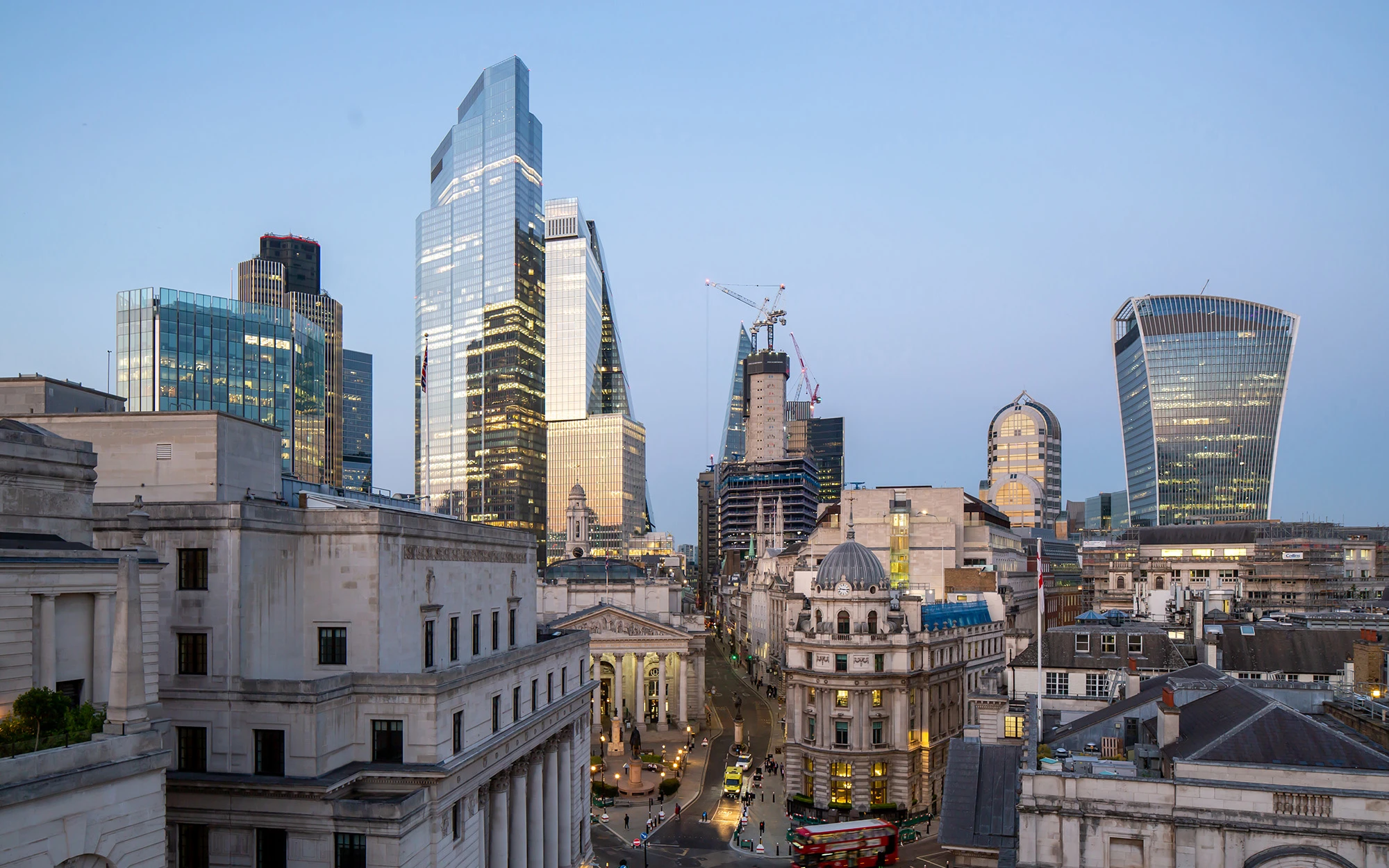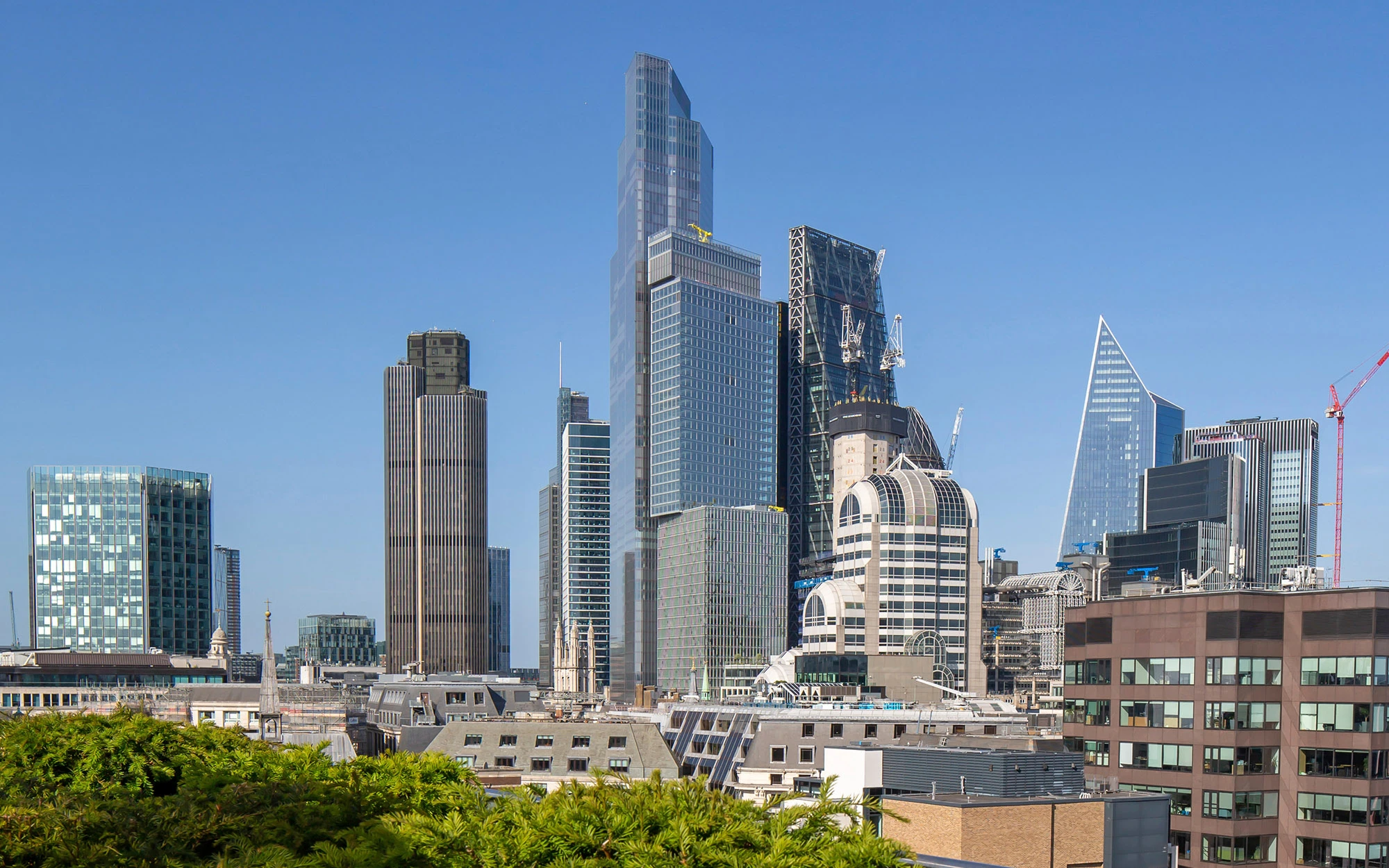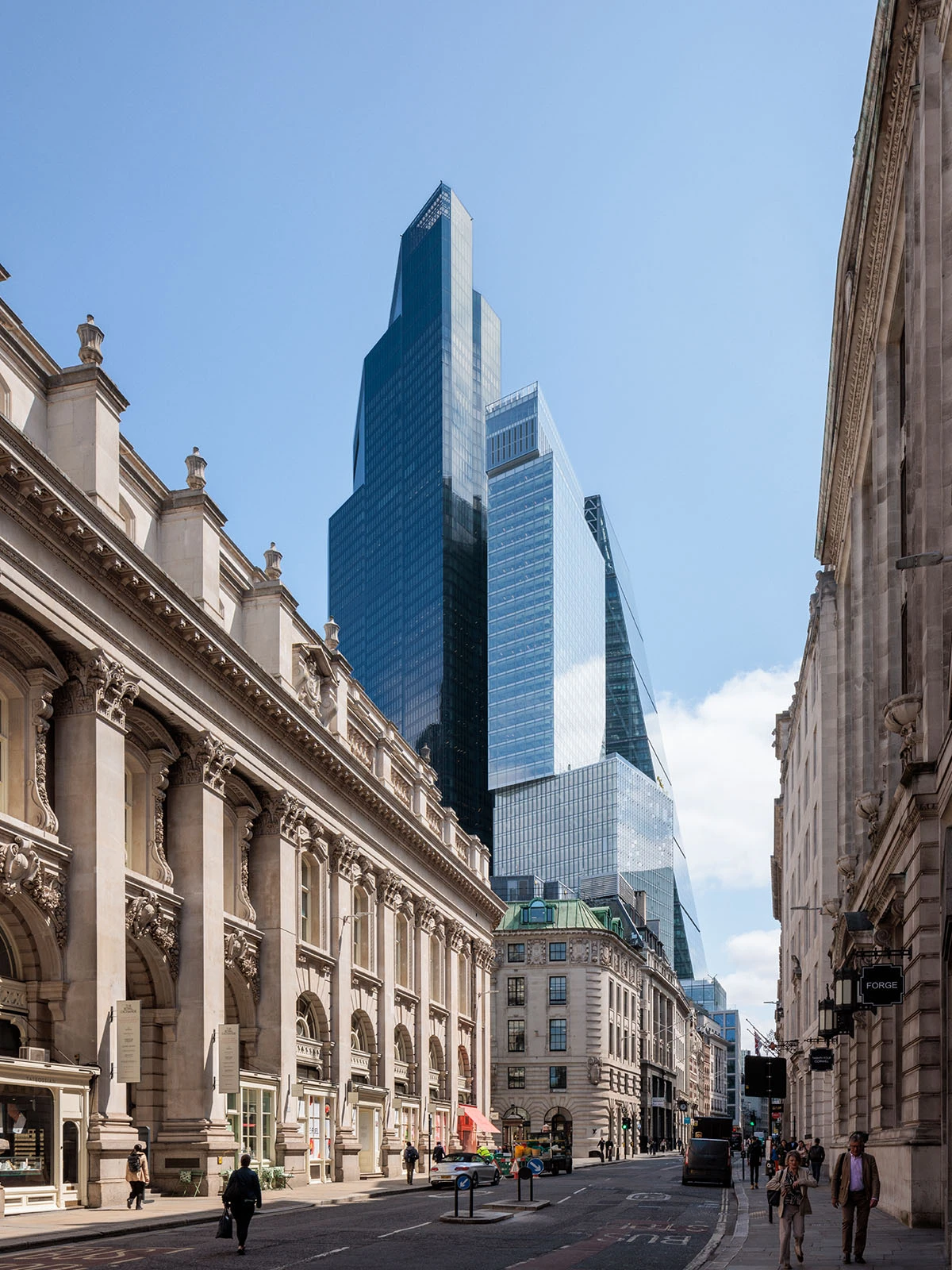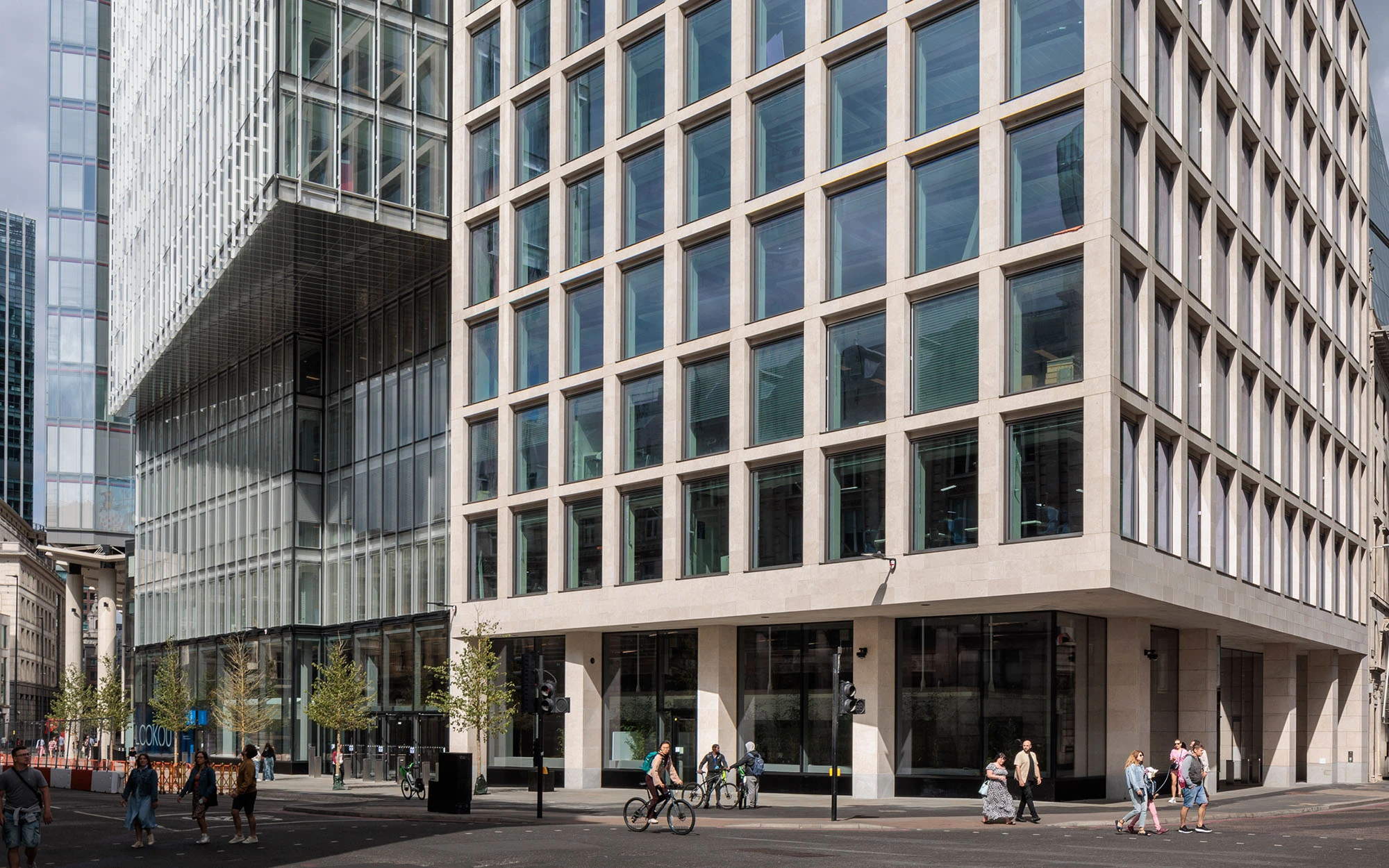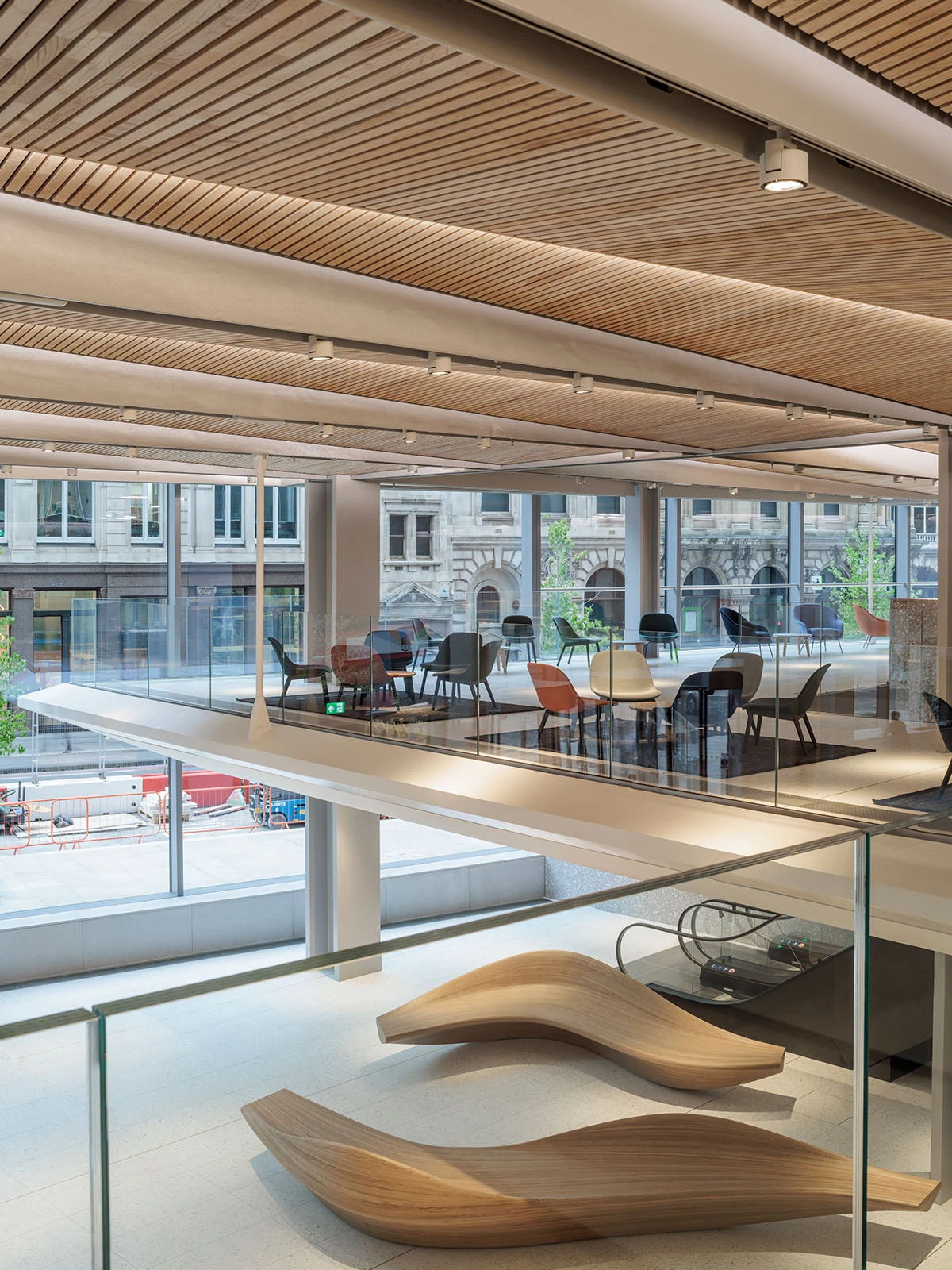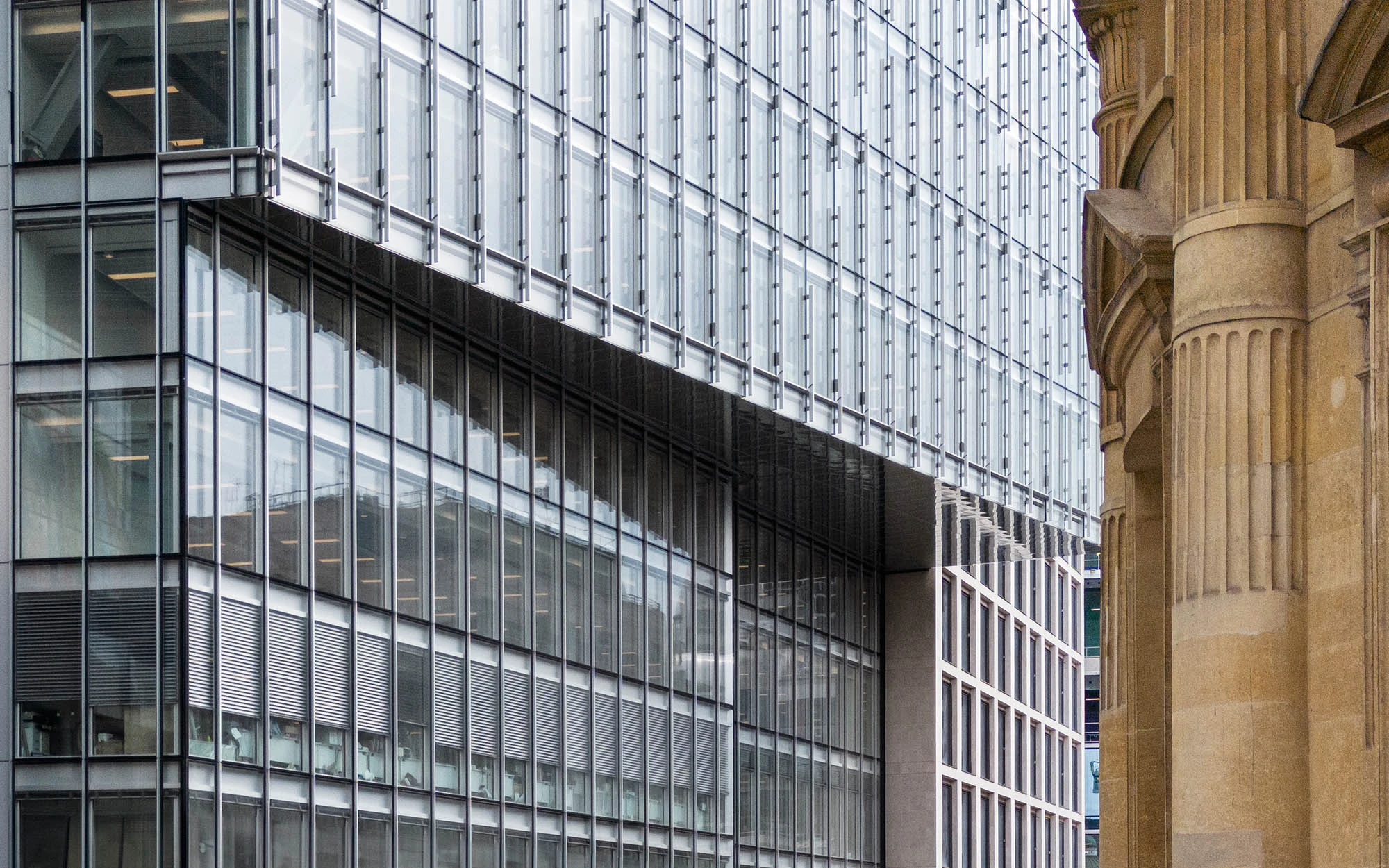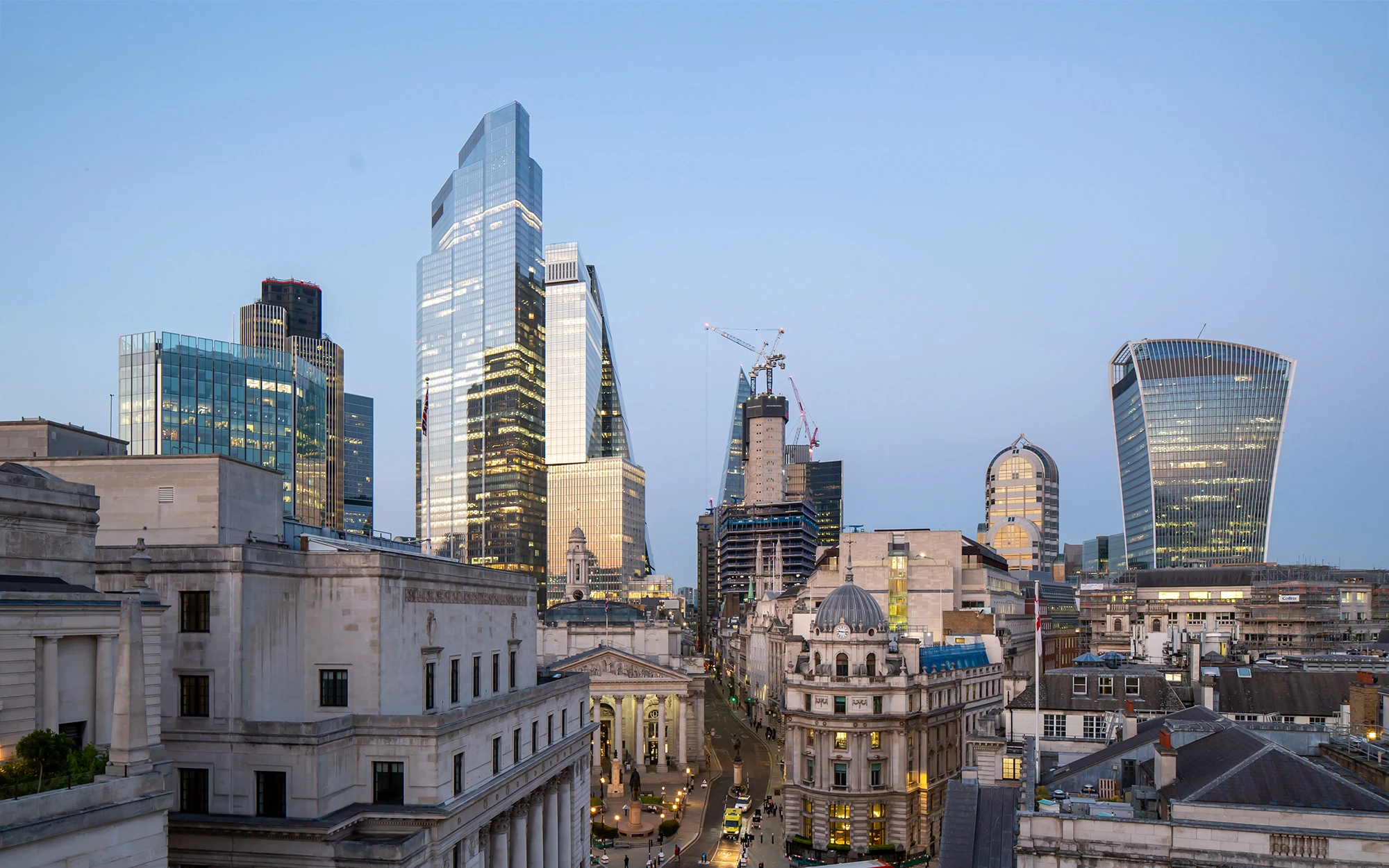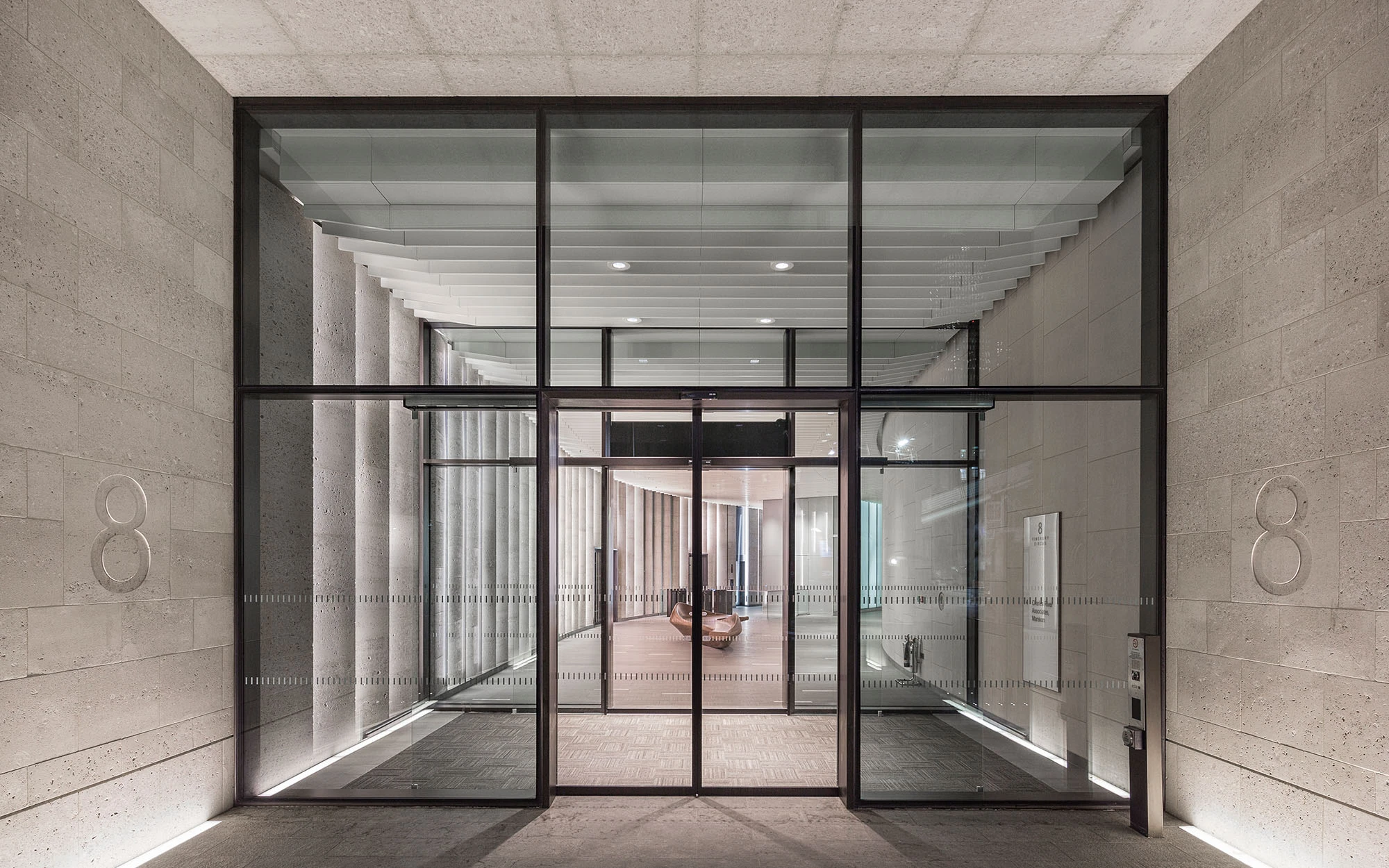8 Bishopsgate Achieves Practical Completion
The latest contribution to the City of London’s cluster of tall buildings has recently achieved practical completion.
The 50-storey tower is an office-led, mixed-use asset providing flexible retail space at the lower ground levels, extensive amenities for tenants and a public viewing gallery at level 50.
The 769,620ft² building is conceived as a series of stacked blocks in response to the surrounding dense urban context. The building includes high sustainability/low energy initiatives in its construction and operation and has achieved a BREEAM ‘Outstanding’ rating. 8 Bishopsgate is understood to be the most sustainable speculative tall commercial scheme in the UK.
Having previously received planning consent in 2015 for a 40-storey tower, WilkinsonEyre supported Mitsubishi Estate and Stanhope in an application for a further 10 storeys following the approval of several other towers in the locality that impacted on the original proposal. The new design, which added a further 120,000ft² of area, was granted planning permission in 2017.
Careful consideration has been given to the proportion of each block and its relation to each adjacent one. To enhance the visual impression of stacking, each block cantilevers on the west façade and is slightly rotated and taken out of plane. This approach has created a dynamic and playful arrangement that breaks down the scale of the tower and responds to the variety of building heights and forms within the local townscape.
Each of the main building elements has a distinctive character, the lower block is clad in natural stone with large square windows, while the mid and upper blocks are fully glazed; a full height double skin façade with an interstitial blind system provides maximum daylight whilst being highly efficient against solar gain and heat loss. As the building steps back, generous roof terraces have been created on levels 9, 11, 25, and 26 to offer much sought-after external amenity space for the building tenants. With both hard and soft landscaping, the terraces create welcome outside spaces with spectacular views.
The ground level entrance gives access to a large double height reception hall entered from both Bishopsgate and Leadenhall. Level 1 provides access to the upper car of the double decker lifts and creates an informal workspace located away from the main circulation routes.
The pavilion, the uppermost block in the building, contains the public viewing gallery with magnificent views across London. A separate entrance lobby at ground level provides public access to dedicated lifts that rise to the full height of the building.
Together with the engineers, Arup, WilkinsonEyre embarked on a process of what we termed conceptual coordination, where both the functional and visual elements of the desired end result were considered in parallel, to arrive at a holistic design proposal. Examples include the integration of the structural braced box to the middle block of the building, which enabled a cantilever, supporting significant office area, to be added with minimal embodied carbon penalty.
Sustainability has been a key design driver from the project’s inception and one of the main goals was to optimise material efficiency. Bespoke steel sections throughout are calculated to be no larger than required by their individual loads. Rationalising the building’s frame has reduced the amount of steel by 25% against a typical tower of this size, saving approximately 5,000 tonnes of CO2. The adoption of a raft foundation, drastically reduces the number of piles for the low and mid-rise elements and saves a further 3000m3 of concrete, equating to approximately 300 tonnes of CO2.
"It has been 10 years since WilkinsonEyre carried out the architectural competition for 8 Bishopsgate. I am so pleased that the completed building encompasses the architectural ambition, the materiality and the craft that we sought from the outset, raising the bar for office buildings in the City of London."
